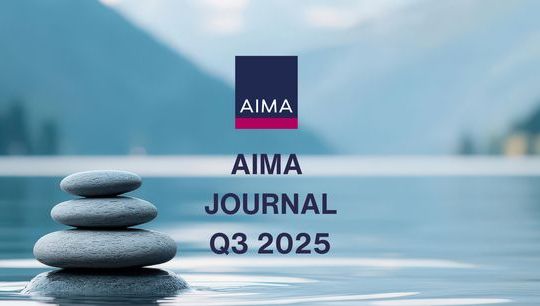Understanding investor liquidity in hedge funds
By Tom Kehoe, AIMA
Published: 12 October 2018
Ten years since the last global liquidity crash which catalysed the financial crisis of 2008, commentators are beginning to talk up the next one.
Following an unprecedented $15 trillion in QE manifested globally through a series of monetary easing actions, central banks have begun to adjust monetary policy. The resultant tightening bias has led to a series of interest rate hikes being implemented by central banks this year (notably in the US, and the UK). Further, geo-political concerns, including protectionist policies of the Trump administration and Brexit, are creating currency tremors and inflationary pressures. All these factors combined have led to a substantial contraction in global liquidity, seen in the steep declines being experienced across some emerging markets already this year.
For fiduciaries, accurate intelligence and information are crucial. It is possible that we are entering a new season in our capital markets, and that the long bull-run since may be ending. To address this uncertainty and a climate of cumulative disruption, AIMA and the CAIA Association have released the fourth instalment in our series of trustee education: ‘Efficient Flows: understanding liquidity in alternative investment funds’.
The paper examines four facets of liquidity and how to conceptualise them across a varied alternative investment fund universe. The paper appraises the different liquidity types to the different levels provided by a range of alternative investment funds. Apart from the efficient management of capital, liquidity concerns the alignment of manager and investor interests, who need confidence that they are being offered the greatest liquidity available without affecting the ability to grow capital. For managers, who must accommodate the needs of their investors, liquidity arrangements must also be tailored to their strategies.
Investor Liquidity for Hedge Funds
During the 2008 financial crisis, the liquidity that some hedge funds had been able to offer investors under normal market conditions was not available. Unable to meet a wave of redemption orders, many hedge funds imposed gates or separated illiquid or hard-to-value assets into side pockets. Such contractual arrangements are not harmful, but investors need to understand them before committing capital.
Hedge fund strategies span the entirety of the liquidity spectrum in all its dimensions. Investors, therefore, need to understand the liquidity of assets in which managers invest on their behalf, the liquidity requirements for strategies pursued by managers, the funding liquidity of such strategies as well as the liquidity provided to investors by the fund vehicles themselves.
In the period after the 2008 financial crisis, many hedge fund managers reacted positively to investors’ demands for more control over fund liquidity and custody arrangements, and for more detailed information regarding their investments. Managers and investors began working together to create bespoke liquidity conditions for specific hedge funds and/or groups of investors, which then match the liquidity profiles of the invested instruments.
When structured appropriately, gates allow managers to offer redeeming investors reasonable levels of liquidity without taking on inappropriate asset-liability mismatches that could lead to instability for the fund and its investors. Accordingly, funds have restructured their investment vehicles to match the liquidity of their strategies and established investor-level gates to ensure fund managers are not forced to liquidate their portfolio to meet redemptions. Illiquid funds use these more than those following more liquid investment strategies, with niche strategy funds deploying more fund level gates.
Liquid hedge funds are now adapting fund liquidity profiles that narrow the gap between themselves and traditional long-only investment fund offerings, which generally offer greater fund liquidity terms. Indeed, many of these funds now provide monthly liquidity options, and industry rule-makers enforce particular requirements of certain structures. UCITS funds, a form of regulated hedge fund structure offered in European markets, must offer bi-weekly liquidity as a minimum. Funds compliant with the Investment Company Act of 1940 (‘40 Act funds’) regulations must also offer regular liquidity, with redemptions being paid within seven days.
Some hedge fund strategies like investments in distressed securities are most often long-term and illiquid, and infrequent redemption periods are common. For managers that pursue these strategies, it is essential to have a large pool of committed capital so that liquidity does not become a problem. For these strategies, frequent liquidity windows, such as on a quarterly or semi-annual basis, work against the nature of the strategy and the fund’s investors. However, many illiquid funds are now launching new share classes with more favourable investor liquidity terms, such as soft lock-ups.
Many hedge funds are now open to the idea of managed accounts and the concept of providing associated levels of transparency. Such accounts are individually customised to meet an investor’s specific goals for the security, return and liquidity of its investment(s). Having such an arrangement gives the investor the scope to set the hedge fund manager a specific investment mandate offering improved liquidity, transparency and investor control. Most arrangements allow for the fund’s underlying positions to be viewed on a live basis with daily reporting. They also allow clients to segregate their investments in vehicles separate from the manager’s main hedge fund, meaning investors retain control over their assets, usually with the ability to redeem much more frequently than the main fund. With this structure, the investor is much better positioned to assess the actual liquidity of the fund with fewer levels of liquidity to consider.
According to Credit Suisse*, demand among institutional investors for managed accounts reached a seven-year high in 2018, with 58% of investors in a recent survey indicating that they currently invest in managed accounts, and a further 29% saying that they plan to increase their allocations.
When setting compensation levels, there are many factors to consider. As investors become more experienced regarding the types of portfolio solutions that they want, the investor liquidity on offer should be a key consideration when setting the appropriate fee structure to pay their investment manager.
In a further sign of investors and hedge fund managers aligning their interests, some of the industry’s largest investors in hedge funds acknowledge that when hedge funds offer greater levels of liquidity they should be compensated accordingly. Albeit this is an emerging trend, it’s unlikely that any compensation being agreed between the hedge fund manager and investor will be ultimately settled by what level of liquidity is on offer to the client.
In short, liquidity is about the efficient management of capital: releasing it when it can be released and holding it when doing so will lead to greater returns. Investors should be confident that their managers are offering them the most liquidity possible without jeopardising their ability to protect and grow that capital. Asset managers, meanwhile, must account for the liquidity needs of their investors, while at the same time ensuring that their funds’ liquidity arrangements are tailored to their strategies. We trust this latest paper will be considered a valued source for trustees and other fiduciaries wishing to learn more about this important area of finance.
* Mass Appeal, Bespoke Approach: A Tailored View of Managed Accounts, Credit Suisse (2018)






